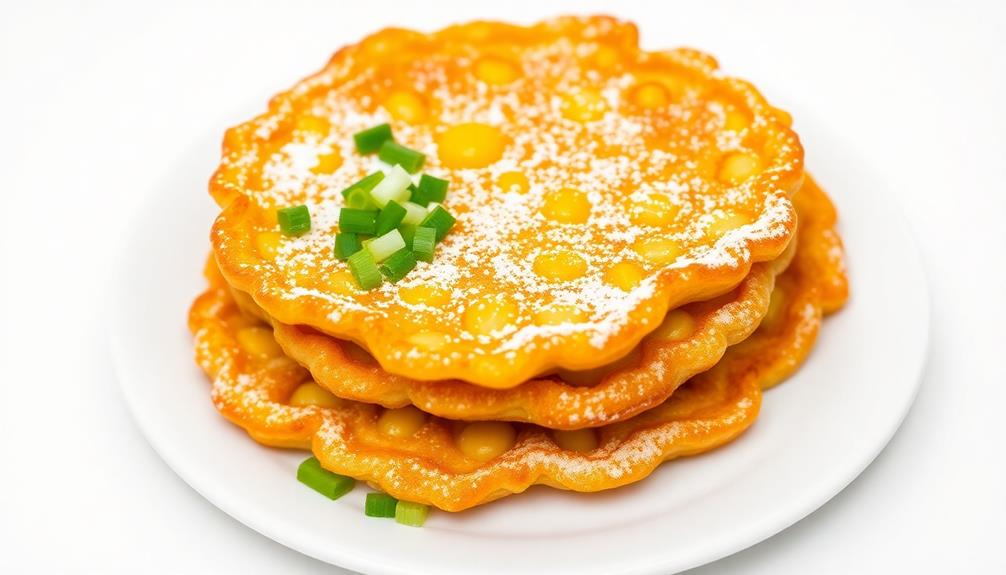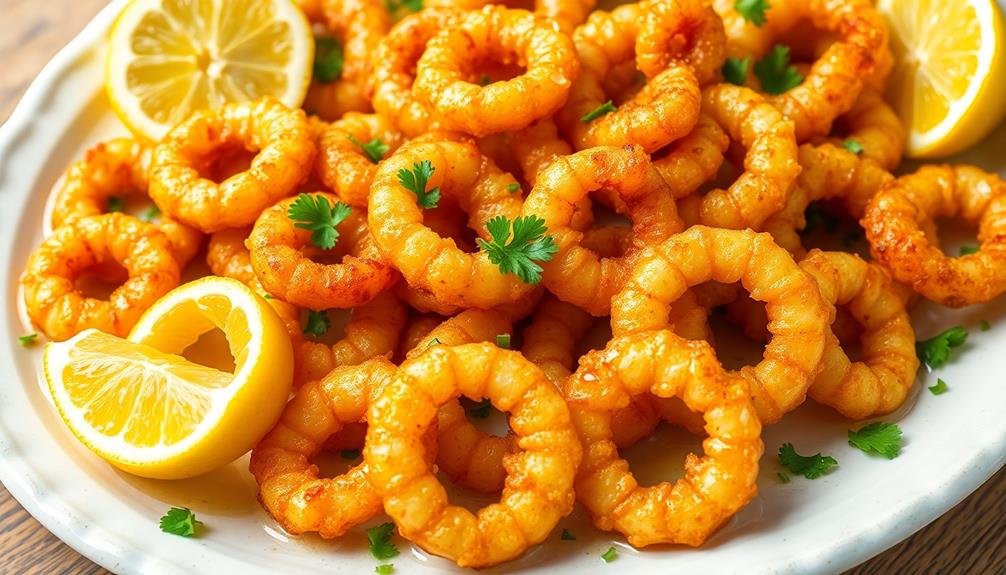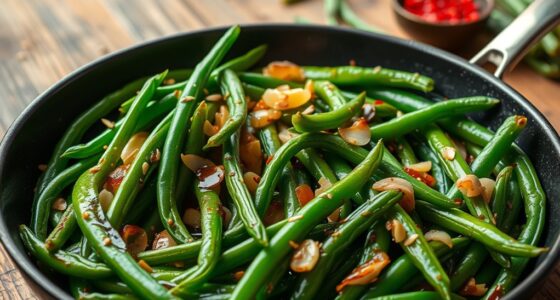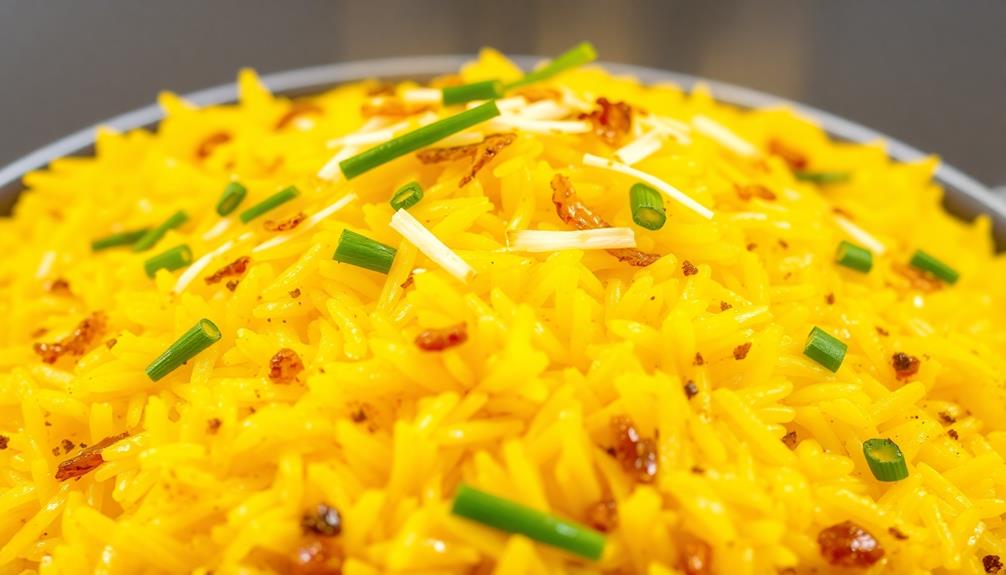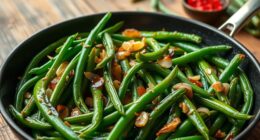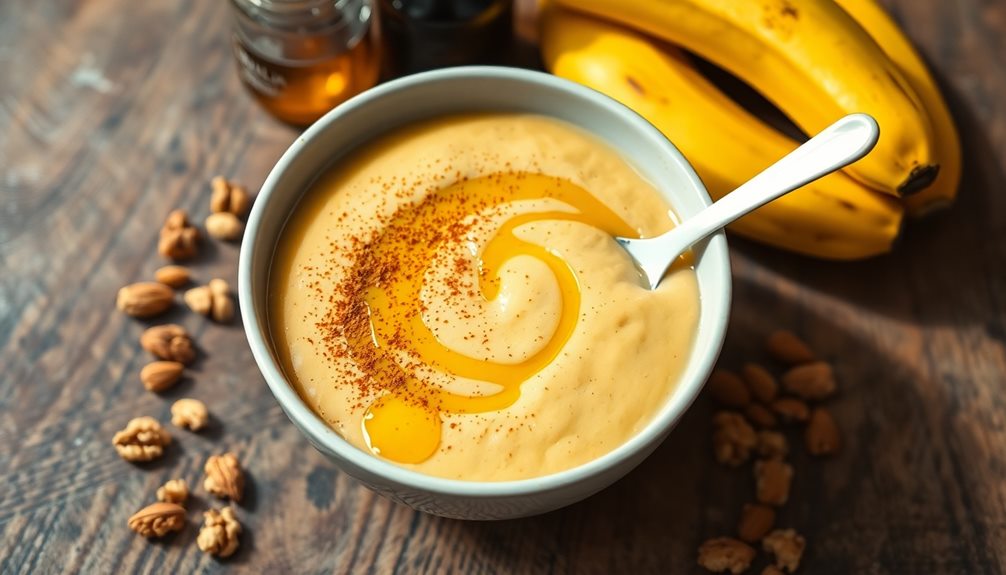Corn fritters have a rich history, originating with indigenous peoples and later adopted by European settlers. These crispy, sweet treats are now cherished across the Americas and the Caribbean as breakfast, sides, or desserts. To make the best corn fritters, you'll need fresh or frozen corn, flour, baking powder, and a few other simple ingredients. Start by combining the corn and flour, then add the egg and milk mixture. Fry the batter in hot oil until golden brown, and serve piping hot. The harmonious balance of crispy exterior and soft interior is sure to satisfy your cravings. If you're intrigued, keep reading to learn more delicious ways to enjoy corn fritters.
Key Takeaways
- Corn fritters have a long and varied history, originating with indigenous peoples in the Americas and evolving over centuries into a cherished regional dish.
- The essential ingredients for corn fritters include fresh or frozen corn, all-purpose flour, baking powder, eggs, and milk, with specific cooking tips for optimal texture and flavor.
- The cooking process involves combining the corn and flour, adding the egg and milk mixture, and frying the batter in hot oil until golden brown.
- Corn fritters offer a versatile flavor profile, with a balance of sweet corn and savory batter, and can be enjoyed as a side dish, snack, or main course.
- Serving corn fritters immediately after frying and presenting them with various dipping sauces or toppings can enhance the overall dining experience.
History
Corn fritters have a long and storied history, dating back to the indigenous peoples of the Americas. These tasty treats were a beloved staple among many Native American tribes, who'd fry up freshly harvested corn into crispy, golden-brown fritters.
The recipe was later adopted by European settlers, who put their own spin on the dish, often adding ingredients like eggs, flour, and spices to create an even more delectable version.
Over the centuries, corn fritters have become a cherished part of many regional cuisines, from the American South to the Caribbean. They've been enjoyed as a comforting breakfast, a satisfying side dish, and even a sweet dessert.
Today, the humble corn fritter remains a beloved comfort food, bringing people together with its irresistible blend of crispy texture and sweet, corny flavor. Whether you're enjoying them at a family barbecue or indulging in a batch fresh from the kitchen, corn fritters continue to delight and inspire generations of food lovers.
Recipe
Corn fritters are a delightful and versatile dish that can be enjoyed as a side, appetizer, or even a main course. These crispy, golden-brown bites are a beloved classic, showcasing the natural sweetness of fresh corn kernels. For those who are looking to add a twist to the traditional corn fritters, consider trying a recipe for shrimp fritters. By incorporating succulent shrimp into the batter, these fritters take on a savory and seafood-infused flavor that is sure to impress. Whether served with a spicy aioli dipping sauce or on their own, these shrimp fritters are a delicious alternative to the classic corn fritter.
To create the perfect corn fritters, it's important to start with high-quality ingredients and follow a straightforward recipe. With a few simple steps, you can have a batch of these tasty treats ready to share with family and friends.
Ingredients:
- 2 cups fresh or frozen corn kernels
- 1 cup all-purpose flour
- 1 teaspoon baking powder
- 1/2 teaspoon salt
- 1/4 teaspoon black pepper
- 1 egg, beaten
- 1/2 cup milk
- 2 tablespoons unsalted butter, melted
In a large bowl, combine the corn kernels, flour, baking powder, salt, and black pepper. Stir to mix well.
In a separate bowl, whisk together the beaten egg and milk. Pour the wet ingredients into the dry ingredients and stir until just combined, being careful not to overmix.
Heat a large skillet or griddle over medium-high heat. Add the melted butter, swirling to coat the surface.
Scoop heaping tablespoonfuls of the batter onto the hot surface, spacing them apart. Cook for 2-3 minutes per side, or until golden brown and crispy. Serve the corn fritters hot, with your favorite dipping sauce or toppings.
To ensure the best results, it's important to use fresh or high-quality frozen corn kernels. If the batter seems too thick, add a bit more milk to achieve the desired consistency.
Additionally, be mindful not to overcrowd the pan, as this can prevent the fritters from crisping up properly.
Cooking Steps
Gather your corn kernels and flour – it's time to get cooking!
Crack an egg, pour in some milk, and whisk it all together.
Next, heat up that oil in your pan and get ready to scoop in those delicious corn fritter bites.
Watch them sizzle and turn a gorgeous golden brown as you fry them to perfection.
Step 1. Combine Corn Kernels and Flour

Next, you'll want to combine the fresh corn kernels with the all-purpose flour. This is a crucial step in creating those delightful, golden-brown corn fritters.
Take the sweet, juicy corn kernels you've just cut from the cob and gently fold them into the flour. Use a large bowl to ensure you have plenty of room to mix everything together without making a mess.
As you stir, you'll notice the flour coating the corn, creating a nice, even mixture. Be sure to handle the corn kernels with care to prevent them from breaking apart. You want to maintain their lovely, whole shape.
Once the corn and flour are fully combined, you're ready for the next step. This simple combination of ingredients is the foundation for the perfect corn fritter batter. With the corn and flour united, you're one step closer to enjoying those crispy, flavorful fritters.
Step 2. Add Egg and Milk
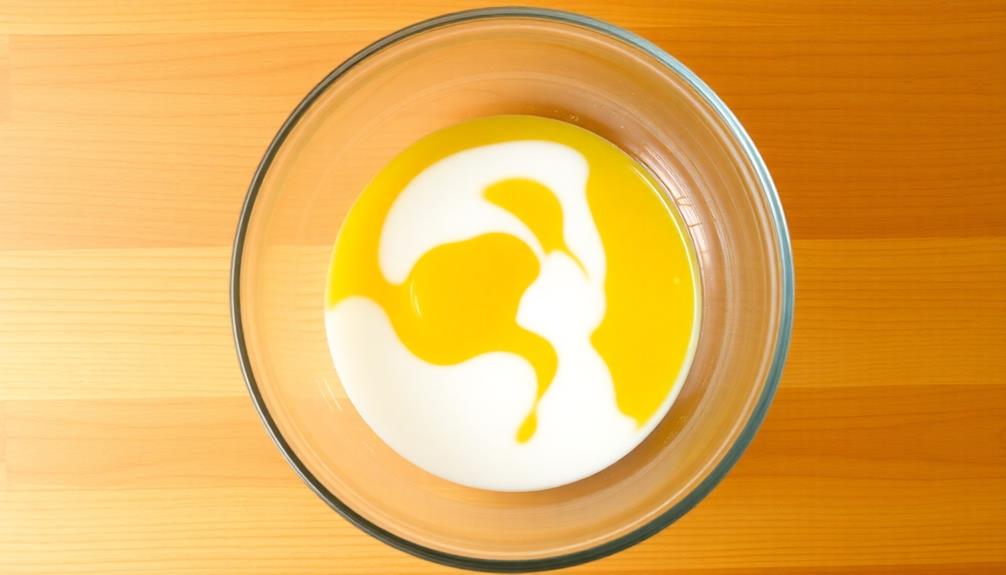
After combining the corn kernels and flour, you'll need to add the egg and milk. This step is crucial for creating the perfect texture and flavor in your corn fritters.
Start by cracking a fresh egg into a small bowl. Use a fork to lightly beat the egg until it's nice and smooth. Next, pour in some milk. The amount of milk you'll need will depend on the recipe, but you'll generally want to use around 1/4 to 1/2 cup. Whisk the egg and milk together until they're fully incorporated.
Now, you can gently fold the egg and milk mixture into the corn and flour mixture. Be careful not to overmix, as this can make your fritters tough. You want to mix just until everything is combined.
The batter should have a thick, pancake-like consistency. If it seems too thick, you can add a bit more milk. If it's too thin, a little extra flour should do the trick. With the egg and milk added, your corn fritter batter is now ready to be fried to golden perfection!
Step 3. Heat Oil in Pan

With the corn fritter batter ready, it's time to start cooking.
Heat a large skillet or frying pan over medium heat and add enough oil to coat the bottom. You want the oil to be hot but not smoking. Once the oil is shimmering, it's time to start frying the corn fritters.
Carefully scoop heaping tablespoons of the batter and gently drop them into the hot oil. Fry the fritters for 2-3 minutes per side, or until they're golden brown and crispy. Be sure to flip them carefully with a spatula to prevent them from falling apart.
As the fritters cook, the oil should stay at a steady temperature. If it starts to get too hot, reduce the heat slightly. You may need to fry the fritters in batches to maintain the right oil temperature.
Once the first batch is done, transfer the crispy fritters to a paper towel-lined plate to drain any excess oil.
Step 4. Scoop Spoonfuls Into Hot Oil

Carefully scoop heaping tablespoons of the batter and, with a gentle motion, drop them into the hot oil. You'll see the batter sizzle and begin to turn a lovely golden brown.
Gently nudge the fritters with a slotted spoon to help them cook evenly. Be patient and let them fry for about 2-3 minutes per side, or until they're crispy and delectable.
Once the fritters are cooked, use the slotted spoon to transfer them to a paper towel-lined plate. This will help absorb any excess oil, leaving you with perfectly crisp and golden corn fritters.
Repeat this process, working in batches, until you've cooked all the batter. Remember to maintain the oil temperature between 350-375°F for the best results.
The key is to resist the urge to overcrowd the pan, which can cause the fritters to steam rather than fry. With a little care and attention, you'll have a plate of irresistible corn fritters ready to enjoy.
Step 5. Fry Until Golden Brown
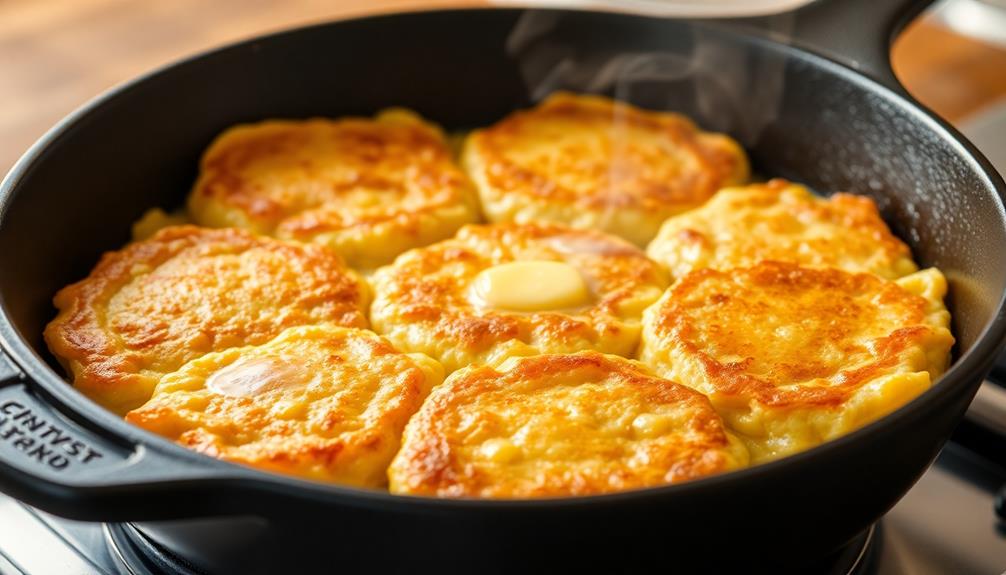
Gently lower the scooped batter into the hot oil. The sound of the sizzle is music to your ears! Watch as the fritters start to turn a beautiful golden brown. This is the moment you've been waiting for – when the corn fritters transform from simple batter into delectable fried treats.
As you enjoy the cooking process, consider how modern heating solutions can enhance your kitchen comfort with quieter operation while you fry.
Adjust the heat as needed to maintain a steady sizzle, but not so high that the fritters burn. Flip them gently with a slotted spoon, ensuring even cooking on all sides. The fritters should develop a crispy, golden-brown exterior while remaining soft and tender inside.
Keep a close eye on them, cooking in batches if needed to avoid overcrowding the pan. Once they reach that perfect shade of golden brown, carefully remove the fritters from the oil and place them on a paper towel-lined plate to drain any excess oil.
Serve the corn fritters hot, savoring the irresistible combination of sweet corn and crispy fried perfection.
Final Thoughts
Corn fritters are a versatile and delicious dish that can be enjoyed year-round. Whether you prefer them as a side, a snack, or even a main course, these golden bites are sure to delight your taste buds.
The combination of sweet corn and savory batter creates a harmonious flavor profile that's hard to resist. Once you've mastered the art of frying them to perfection, you'll find yourself craving these corn fritters again and again.
They're a great way to use up any leftover corn, and you can even experiment with different add-ins, like jalapeños or cheese, to suit your personal preferences.
Serve them hot and fresh, with a side of your favorite dipping sauce or a sprinkle of powdered sugar. Corn fritters are the perfect way to bring a taste of summer to your table, no matter the season.
Frequently Asked Questions
What Is the Best Type of Corn to Use for Bakwan Jagung?
You'll want to use a sweet corn variety for the best flavor and texture in your fritters. Look for corn that's young, juicy, and tender – it'll result in crispy yet moist bakwan jagung.
Can I Substitute the Corn With Other Vegetables?
You can certainly substitute the corn with other vegetables. Try using potatoes, carrots, or zucchini for a twist on the classic recipe. Just be sure to adjust the cooking time and seasoning accordingly.
How Long Can the Batter Be Stored Before Frying?
The batter can be stored in the refrigerator for up to 2-3 days before frying. Be sure to give it a good stir before using, as the ingredients may settle. This makes it a convenient option for quick snacks or appetizers.
What Is the Ideal Oil Temperature for Frying Bakwan Jagung?
The ideal oil temperature for frying is between 350°F and 375°F. This temperature range ensures the exterior crisps up nicely while the interior cooks through without burning. Maintain this temperature throughout the frying process for best results.
Can I Freeze the Cooked Bakwan Jagung for Later?
You can absolutely freeze the cooked bakwan jagung for later. Just let them cool completely, then store them in an airtight container or freezer bag. They'll keep for a few months in the freezer, making for a convenient snack or side dish.
